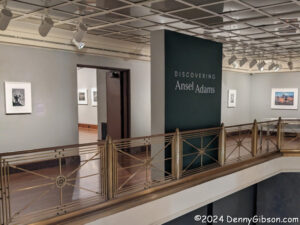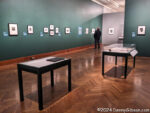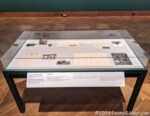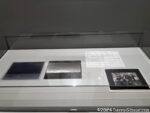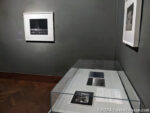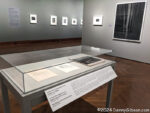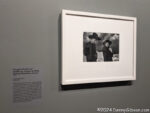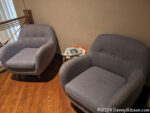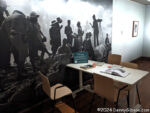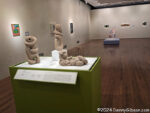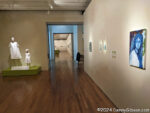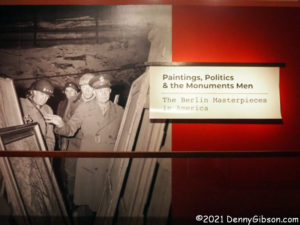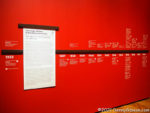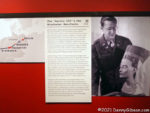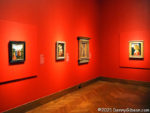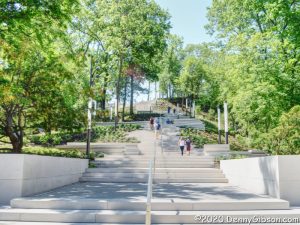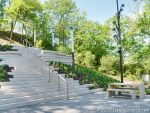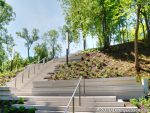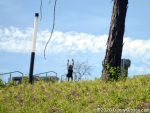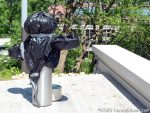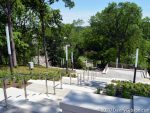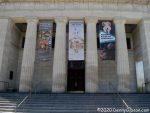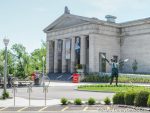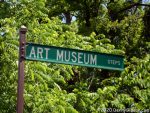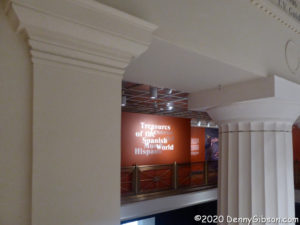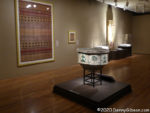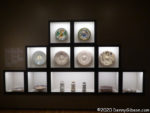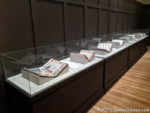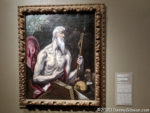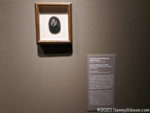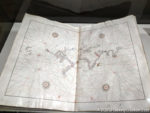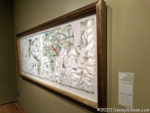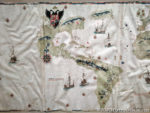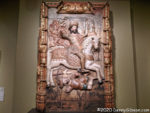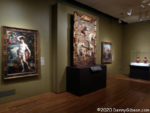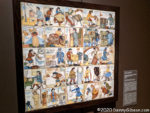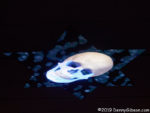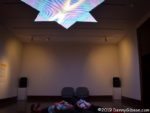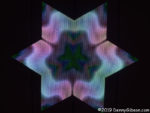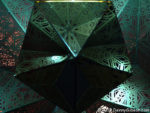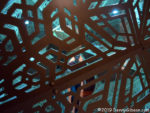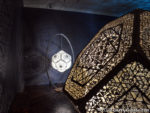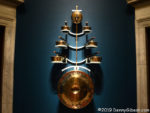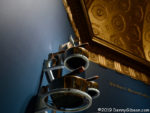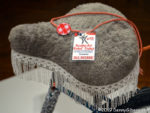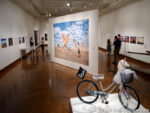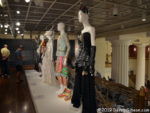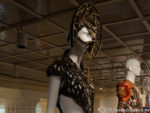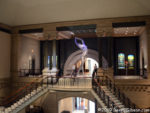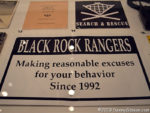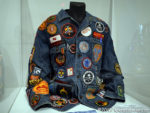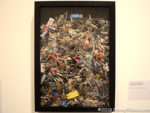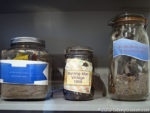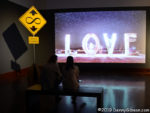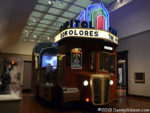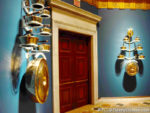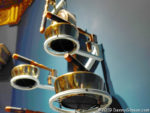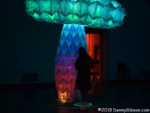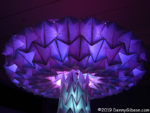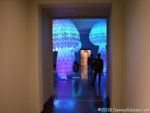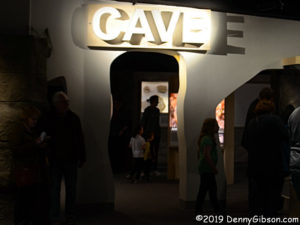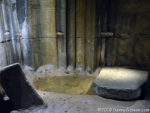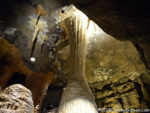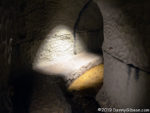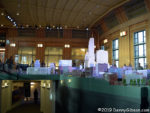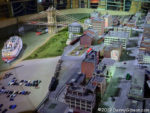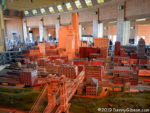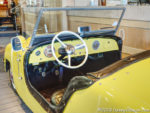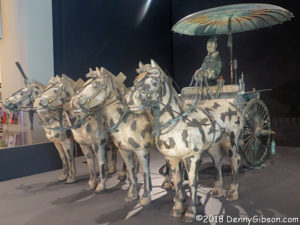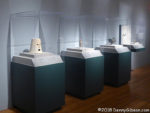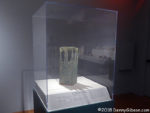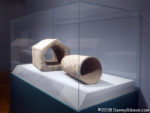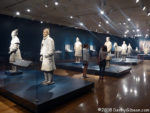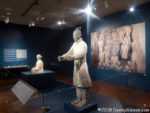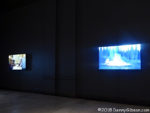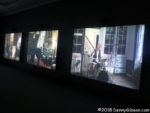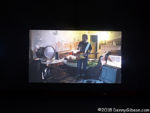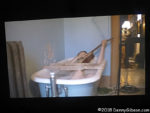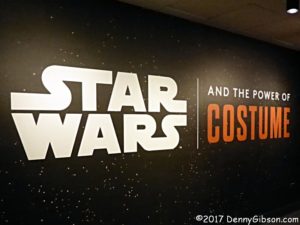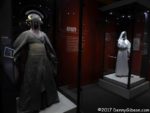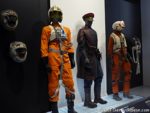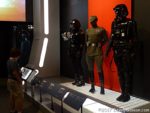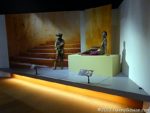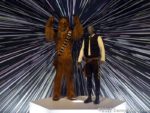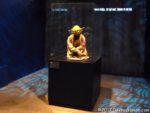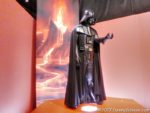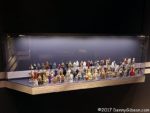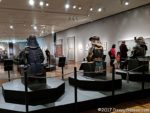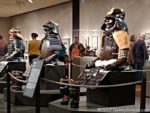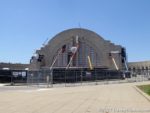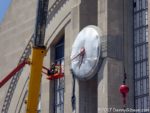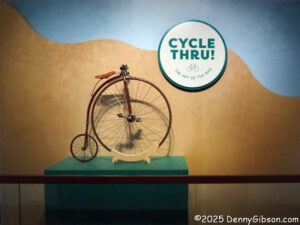 I made it to “Cycle Thru! The Art of the Bike” within its first week. It opened at the Cincinnati Art Museum on Friday, April 4, and I attended on Thursday, April 10. It will be there for another eighteen weeks, through August 24. The exhibit includes photographs, paintings, and other pieces of art that feature bicycles, but while I enjoyed looking at those items, what I documented were the real things: Bicycles that might themselves be considered pieces of art.
I made it to “Cycle Thru! The Art of the Bike” within its first week. It opened at the Cincinnati Art Museum on Friday, April 4, and I attended on Thursday, April 10. It will be there for another eighteen weeks, through August 24. The exhibit includes photographs, paintings, and other pieces of art that feature bicycles, but while I enjoyed looking at those items, what I documented were the real things: Bicycles that might themselves be considered pieces of art.
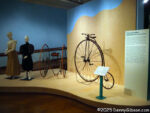
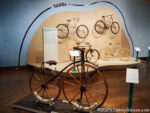
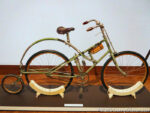 The exhibit begins with an 1878 Ariel High Wheel. This style of bicycle originated in Britain and was commonly known as a penny-farthing because the pairing of the large and small wheels reminded people of the relative size of penny and farthing coins. On the left in that first picture is an Otto Dicycle, which women could ride without risking the embarrassment of exposing an ankle. In the foreground of the second photo is a cast iron and wood velocipede from 1865. I had seen the three-wheeled vehicle in the third picture in promotions for the exhibit but could not figure out what was going on until I read its description at the museum. That trailing wheel was supposed to make the ride smoother, but it’s not clear how well that worked. That rider comfort was definitely top of mind with this bike is reinforced by its “bespoke anatomical saddle“.
The exhibit begins with an 1878 Ariel High Wheel. This style of bicycle originated in Britain and was commonly known as a penny-farthing because the pairing of the large and small wheels reminded people of the relative size of penny and farthing coins. On the left in that first picture is an Otto Dicycle, which women could ride without risking the embarrassment of exposing an ankle. In the foreground of the second photo is a cast iron and wood velocipede from 1865. I had seen the three-wheeled vehicle in the third picture in promotions for the exhibit but could not figure out what was going on until I read its description at the museum. That trailing wheel was supposed to make the ride smoother, but it’s not clear how well that worked. That rider comfort was definitely top of mind with this bike is reinforced by its “bespoke anatomical saddle“.
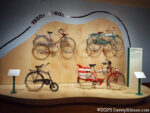

 I thought one of the vehicles in the 1900s-1910s display might belong to Wile E. Coyote, but what looked like an Acme Rocket is one of two metal cans to hold air and keep the water bike afloat. The wall behind the very rare 1960 fiberglass Bowden Spacelander is filled with bicycles from the 1930s and 1940s. The 1965 Sears Spaceliner at upper left in the 1950s-1960s caught my attention because of its resemblance to my 1960 J. C. Higgins Flightliner. The Spaceliner was designed by Viktor Schreckengost and built by Murray, and I’m guessing that is also true of the Flightliner.
I thought one of the vehicles in the 1900s-1910s display might belong to Wile E. Coyote, but what looked like an Acme Rocket is one of two metal cans to hold air and keep the water bike afloat. The wall behind the very rare 1960 fiberglass Bowden Spacelander is filled with bicycles from the 1930s and 1940s. The 1965 Sears Spaceliner at upper left in the 1950s-1960s caught my attention because of its resemblance to my 1960 J. C. Higgins Flightliner. The Spaceliner was designed by Viktor Schreckengost and built by Murray, and I’m guessing that is also true of the Flightliner.
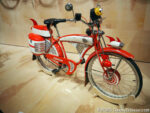 Of course, for anyone not having owned a Flightliner, the big attention grabber in that last group of bicycles is almost certainly the customized 1953 Schwinn DX Cruiser from Pee-wee’s Big Adventure. The saddle might not be bespoke, but everything else sure is.
Of course, for anyone not having owned a Flightliner, the big attention grabber in that last group of bicycles is almost certainly the customized 1953 Schwinn DX Cruiser from Pee-wee’s Big Adventure. The saddle might not be bespoke, but everything else sure is.
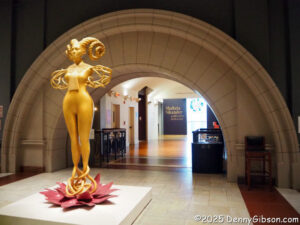 The museum itself is, as always, free. “Cycle Thru!” is not. However, admission to the bicycle exhibit also includes another paid exhibit at the museum. Until May 4, that second exhibit is “Shahzia Sikander: Collective Behavior!“. After that, “Cycle Thru!” will be paired with “Farm to Table: Food and Identity in the Age of Impressionism“. I’m sure “Farm to Table” will be a very good show, but man, I sure liked the Sikander exhibition. The photo above is of the second edition of her sculpture “NOW”. The first edition is on permanent display outside the Appellate Courthouse in Manhattan
The museum itself is, as always, free. “Cycle Thru!” is not. However, admission to the bicycle exhibit also includes another paid exhibit at the museum. Until May 4, that second exhibit is “Shahzia Sikander: Collective Behavior!“. After that, “Cycle Thru!” will be paired with “Farm to Table: Food and Identity in the Age of Impressionism“. I’m sure “Farm to Table” will be a very good show, but man, I sure liked the Sikander exhibition. The photo above is of the second edition of her sculpture “NOW”. The first edition is on permanent display outside the Appellate Courthouse in Manhattan
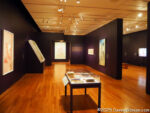
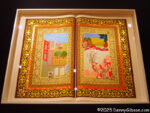
 As the museum’s description of the exhibit states, Shahzia Sikander works “in a variety of mediums—painting, drawing, print, digital animation, mosaic, sculpture, and glass,” and I believe the exhibit contains examples of every one of them. The first item shown here, “Provenance the Invisible Hand“, combines silkscreening and hand painting. The second, “Arose“, is a glass mosaic. A detail from its center is here.
As the museum’s description of the exhibit states, Shahzia Sikander works “in a variety of mediums—painting, drawing, print, digital animation, mosaic, sculpture, and glass,” and I believe the exhibit contains examples of every one of them. The first item shown here, “Provenance the Invisible Hand“, combines silkscreening and hand painting. The second, “Arose“, is a glass mosaic. A detail from its center is here.
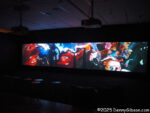
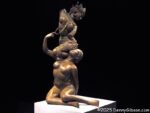
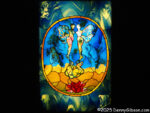 “Liquid Light II” is painted glass. “Promiscuous Intimacies” is a bronze sculpture. I made myself comfortable on a futon and watched the “Parallax” digital animation but somehow missed its description, so I am including a capture from a PDF of exhibit labels here.
“Liquid Light II” is painted glass. “Promiscuous Intimacies” is a bronze sculpture. I made myself comfortable on a futon and watched the “Parallax” digital animation but somehow missed its description, so I am including a capture from a PDF of exhibit labels here.
I also missed any onsite description for “NOW”, so am including a capture of the PDF for that as well. It is here. As I did some fairly casual research on Sikander, I learned of an 18-foot statue named “Witness” that is similar to the 8-foot “NOW”. On July 8, 2024, while on display at the University of Houston, “Witness” was beheaded. Although an anti-abortion group had protested the statue’s presence in February, nothing is known that connects the group with the decapitation. Sikander explained her desire to not have the statue repaired with, “The damage reflects the hateful misogynistic act and it should not be forgotten.”

